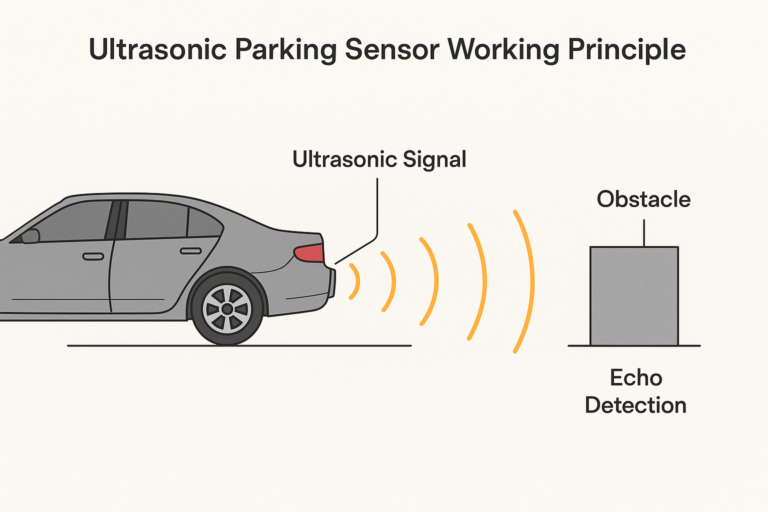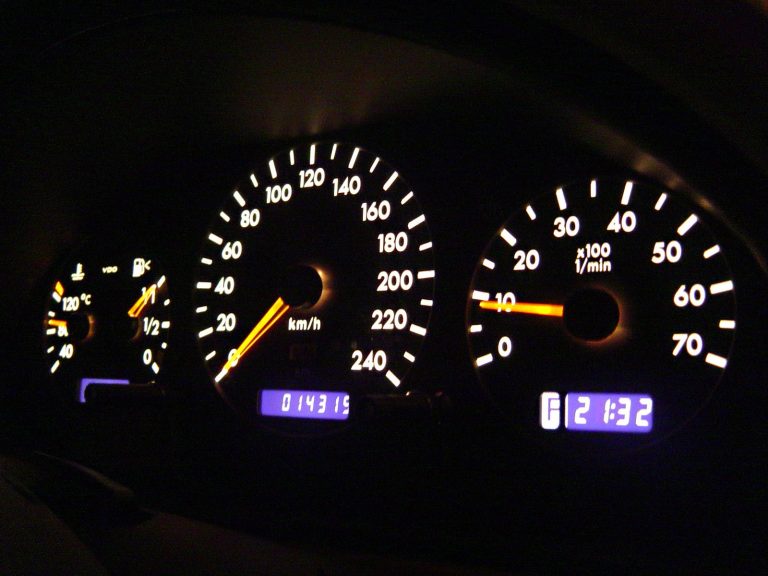“Idle Insights: Interpreting Map Sensor Reading at idle kpa for Optimal Performance” – 2023
Introduction – Map Sensor Reading at idle kpa
A MAP sensor, also known as a Manifold Absolute Pressure sensor is a part of the electronic control system (ECS) found in internal combustion engines. Its main purpose is to monitor and transmit real time information, about the pressure inside the manifold. This manifold is responsible for blending air and fuel before combustion occurs. The pressure data obtained from the MAP sensor plays a role in optimizing engine performance, fuel efficiency and controlling emissions.
One critical aspect of the readings from the MAP sensor is the Idle KPA value. This value represents the pressure inside the manifold when the engine is idling, typically at a speed of 600 800 RPM (revolutions per minute). The Idle KPA readings provide insights into the health and performance of the engine especially its ability to maintain a stable air fuel mixture, at low speeds.

How MAP Sensors Work
How Sensors Work
MAP sensors function by being sensitive, to changes in pressure. They usually have a silicon diaphragm or a piezoresistive element that responds to pressure variations and undergoes physical deformation. This deformation affects the resistance of the sensor producing an analog voltage signal that directly corresponds to the pressure in the manifold.
The Role of MAP Sensors in Engine Performance
The signal from the MAP sensor is sent to the engines ECU (Engine Control Unit) which acts as its brain. The ECU combines this data with inputs from sensors to determine the air fuel mixture for current engine conditions. By adjusting fuel injection based on pressure the ECU ensures combustion maximizing power output while minimizing fuel consumption.
Importance of Map Sensor Reading at idle kpa
Understanding Idle KPA in Automotive Context
Map Sensor Reading at idle kpa are particularly important as they indicate how well an engine maintains an air fuel mixture, at RPMs. When an engine is idling the throttle valve is partially closed, restricting airflow into the manifold. This reduced airflow can lead to lean air fuel mixtures, which may cause misfires rough idling and increased emissions.
Impact, on Engine Health and Efficiency
A functioning engine usually maintains an Idle KPA value within a range typically ranging from 20 to 35 kPa. Any deviations from this range might indicate problems that can impact the engines performance, fuel efficiency and emissions. For example if the Idle KPA consistently remains low it could indicate a vacuum leak whereas a high Idle KPA could suggest a blockage, in the passage or a faulty MAP sensor.
Interpreting MAP Sensor Readings
Normal Range of Idle KPA
The normal range of Map Sensor Reading at idle kpa Reading at idle kpa values varies depending on the engine type and specifications. However, as a general rule, most engines operate within a range of 20 to 35 kPa when idling. This range ensures a proper air-fuel mixture, maintaining stable combustion, optimal fuel efficiency, and minimal emissions.
Deviations and What They Indicate
Deviations from the normal Idle KPA range can signal various issues within the engine system. A consistently low Idle KPA, for instance, could indicate a vacuum leak, which allows unmetered air to enter the engine, disrupting the air-fuel mixture. This can lead to rough idling, increased fuel consumption, and potential engine damage.
Conversely, an excessively high Idle KPA might suggest a blocked intake passage or a faulty MAP sensor. A blocked intake passage restricts airflow, causing the engine to work harder to maintain a stable air-fuel mixture. A faulty MAP sensor, on the other hand, may provide inaccurate pressure readings, leading to improper fuel injection and engine performance issues.
Map Sensor Reading at idle kpa play a critical role in modern engine management systems, providing valuable data for optimizing fuel efficiency, power output, and emissions control. Idle KPA readings, in particular, offer insights into the engine’s ability to maintain a stable air-fuel mixture at low speeds, serving as an indicator of overall engine health and performance.

Common Issues Reflected in Idle KPA
Map Sensor Reading at idle kpa, can provide valuable insights into various issues that may affect engine performance. Deviations from the normal Idle KPA range can signal underlying problems that require attention. Here are three common issues reflected in Idle KPA:
Vacuum Leaks
A vacuum leak occurs when a breach in the intake system allows unmetered air to enter the engine. This unmetered air disrupts the air-fuel mixture, causing the engine to run lean. A lean air-fuel mixture can lead to various problems, including:
• Rough idling: The engine may run rough or shake when idling, especially when warm.
• Stalling: The engine may stall, especially when coming to a stop or when idling for extended periods.
• Reduced fuel economy: The engine may burn more fuel due to the inefficient combustion caused by the lean air-fuel mixture.
• Increased emissions: The engine may produce higher emissions due to incomplete combustion.
Issues, with the Throttle Body
The throttle body serves as a valve to regulate the amount of air that enters the engine. When the throttle body malfunctions it can lead to idling or engine stalling. This occurs because the throttle body fails to control airflow resulting in an air fuel mixture that becomes either too rich or too lean.
Signs of a malfunctioning throttle body include;
• Irregular idling; The engine may idle at low RPMs or it may fluctuate unpredictably.
• Stalling; The engine may shut off when coming to a stop or while idling.
• Hesitation; The engine may experience hesitation. Stumbling when accelerating.
• Check engine light; The check engine light might illuminate, indicating an issue with the engines air fuel system.
Engine Misfires – Map Sensor Reading at idle kpa
Engine misfires occur when one or more cylinders fail to ignite. This can result in idling, shaking of the engine reduced fuel efficiency and increased emissions. There are factors that can cause engine misfires, including;
• Faulty spark plugs or ignition coils; These components play a role in igniting the air fuel mixture, within each cylinder. If they are faulty they can impede firing of the cylinder.
• Vacuum leaks; As I mentioned earlier when there are leaks, in the vacuum system it can disturb the balance of air and fuel which in turn can result in misfires.
• Issues with fuel injectors; The fuel injectors play a role in delivering the amount of fuel to each cylinder. However if they become clogged or start malfunctioning they can cause misfires.
• Problems with engine compression; When the compression level, in one or more cylinders is too low it hampers the ignition of the air fuel mixture.
Diagnosing Idle KPA Problems
A. Using Diagnostic Tools
Diagnosing Idle KPA problems can range from simple visual inspections to more complex procedures involving specialized diagnostic tools. Here’s a breakdown of the approaches involved:
Visual Inspection The first step in diagnosing Idle KPA problems is to perform a thorough visual inspection of the engine and its surrounding components. This involves checking for: • Loose or damaged vacuum hoses: Vacuum leaks can significantly impact Idle KPA readings. Look for cracked, loose, or disconnected hoses in the intake system.
• Throttle body cleanliness: A dirty or clogged throttle body can disrupt airflow, affecting Idle KPA. Inspect the throttle body for dirt, debris, or buildup.
• MAP sensor condition: The MAP sensor itself can be a source of Idle KPA issues. Check for any physical damage or contamination on the sensor.
OBD-II Code Scanning
If no visual abnormalities are detected, the next step is to connect an OBD-II scanner to the vehicle’s diagnostic port. OBD-II codes provide valuable information about potential problems in the engine control system, including issues that may affect Idle KPA readings.
Advanced Diagnostic Tools
For more in-depth diagnosis, advanced diagnostic tools, such as a scan tool or a graphing multimeter, can be employed. These tools allow for real-time monitoring of engine data, including MAP sensor readings, fuel injection timing, and ignition timing. This data can help pinpoint the exact cause of Idle KPA deviations.
Professional vs. DIY Troubleshooting
While some Idle KPA problems can be diagnosed and addressed using basic tools and DIY techniques, more complex issues may require professional assistance. Here’s a breakdown of when to consider professional vs. DIY troubleshooting:
DIY Troubleshooting
Simple Idle KPA problems, such as those caused by loose vacuum hoses or a dirty throttle body, can often be addressed by DIY enthusiasts with basic mechanical skills and tools. However, it’s crucial to follow proper repair procedures and safety precautions.
Professional Troubleshooting
For more complex Idle KPA issues, such as those involving the MAP sensor itself, engine misfires, or underlying electrical problems, seeking professional assistance is recommended. Experienced technicians have the expertise and tools to accurately diagnose and repair these issues.
Importance of Regular Maintenance
Map Sensor Reading at idle kpa : Regular maintenance plays a vital role in preventing Idle KPA problems and ensuring optimal engine performance. Here are some preventive measures and scheduled maintenance practices to consider:
Preventive Measures for Optimal MAP Sensor Performance
• Regular air filter replacement: A clean air filter ensures the engine receives the proper amount of clean air, preventing contamination that could affect MAP sensor readings.
• Fuel system maintenance: Regular fuel system maintenance, including injector cleaning and fuel filter replacement, helps maintain optimal fuel delivery and combustion, minimizing the risk of Idle KPA issues related to fuel delivery problems.
• Vacuum system checks: Periodically inspect the vacuum system for leaks or loose connections. Leaks can disrupt the air-fuel mixture, affecting Idle KPA readings.
Scheduled Inspections and Cleaning
• MAP sensor cleaning: Regularly cleaning the MAP sensor can remove any accumulated dirt or debris that could interfere with its operation.
• Throttle body cleaning: Periodically cleaning the throttle body helps maintain proper airflow and prevent Idle KPA problems caused by a dirty or clogged throttle body.
• Engine tune-ups: Regular engine tune-ups, including spark plug replacement and ignition system checks, can help prevent misfires and other issues that could affect Idle KPA readings.
Conclusion
Map Sensor Reading at idle kpa play a role, in engine management systems. They provide information to optimize fuel efficiency, power output and emissions control. Specifically the readings of KPA offer insights into the engines ability to maintain a stable air fuel mixture at low speeds. These readings serve as an indicator of the health and performance of the engine.
To ensure engine performance and prevent any issues with idle KPA it is crucial to follow maintenance practices. This includes replacing air filters checking the fuel system inspecting the vacuum system cleaning the MAP sensor and throttle body as performing engine tune ups. By implementing these practices you can effectively maintain your engines performance. Prevent any problems, with KPA.
FAQs
What are the signs of a MAP sensor?
Signs that indicate a faulty MAP sensor may include;
• Unsteady idling
• Engine stalling
• fuel efficiency
• Loss of power output
• Illuminated check engine light
How frequently should I clean my MAP sensor?
The recommended frequency, for cleaning your MAP sensor depends on driving conditions and the environment. In general it is advisable to clean the sensor every 30,000 to 50,000 miles.
Is it possible to clean my throttle body by myself?
Yes you can perform throttle body cleaning yourself using tools and cleaning solvents. However it is crucial to follow procedures in order to prevent any damage to the throttle body or its components.
What distinguishes a vacuum leak from a throttle body malfunction?
A vacuum leak occurs when unmeasured air enters the engine through an intake system breach. This disrupts the air fuel mixture. Causes the engine to run lean. On the hand a throttle body malfunction arises from an issue, with the throttle body itself leading to control of airflow into the engine.
How can I avoid Idle KPA problems?
The effective method, for avoiding Idle KPA issues is to adhere to maintenance procedures. This includes replacing the air filter conducting fuel system checks inspecting the vacuum system cleaning the MAP sensor and throttle body as performing engine tune ups.




